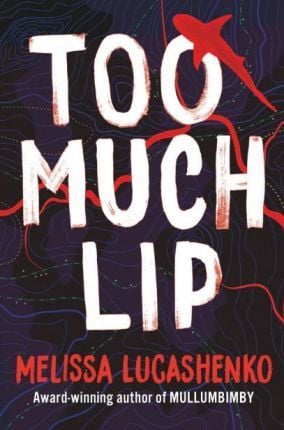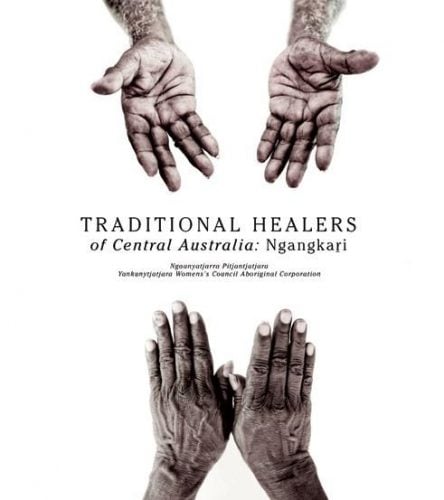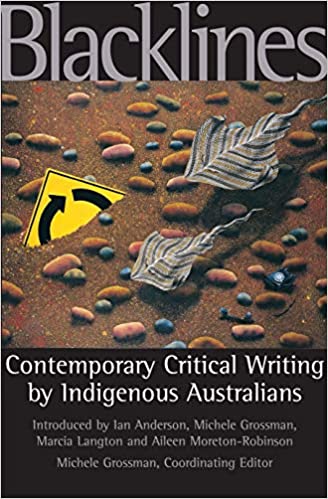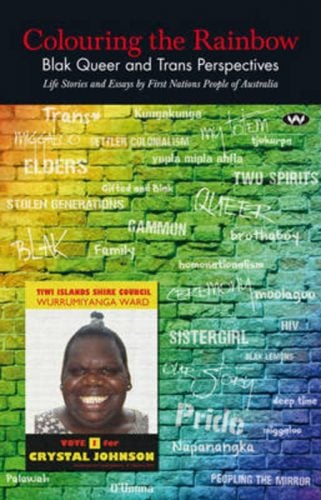Explore 10 books by First Nations Australian writers
It should come as no surprise that reading is one of our favourite ways to explore new worlds, experience life in someone else’s shoes and expand our knowledge of history. The library has millions of books, videos and journals in our collection – including hundreds of books by and about First Nations peoples in Australia.
While nonfiction and essays provide valuable historical context and information, novels offer writers a chance to imagine alternative histories and tell stories – both playful and painful – through fiction. Both forms are essential reading for non-Indigenous Australians, and we have recommendations across multiple genres.
Here are 10 books by First Nations Australian writers to get you started.
Summaries taken from publisher websites.
Fiction
 1. The drover’s wife: the legend of Molly Johnson
1. The drover’s wife: the legend of Molly Johnson
by Leah Purcell
Deep in the heart of Australia’s high country, along an ancient, hidden track, lives Molly Johnson and her four surviving children, another on the way. Husband Joe is away months at a time droving livestock up north, leaving his family in the bush to fend for itself. Molly’s children are her world, and life is hard and precarious with only their dog, Alligator, and a shotgun for protection – but it can be harder when Joe’s around…. One night under the moon’s watch, Molly has a visitor of a different kind – a black ‘story keeper’, Yadaka. He’s on the run from authorities in the nearby town, and exchanges kindness for shelter. Both know that justice in this nation caught between two worlds can be as brutal as its landscape. But in their short time together, Yadaka shows Molly a secret truth, and the strength to imagine a different path.
 2. Manhattan dreaming
2. Manhattan dreaming
by Anita Heiss
Lauren is a curator at the National Aboriginal Gallery in Canberra. She’s good at her job, passionate about the Arts, and takes work seriously. It’s easy for Lauren to focus on work, that is, when she’s not focussing on Adam. Lauren is smitten with, or as her friends say, obsessed with Adam – the halfback for the Canberra Cockatoos. But Adam is a player, on and off the field. Lauren knows he’s the one, but he doesn’t seem to feel the same way about her. If she just waits long enough, though, surely he’ll realise how much he needs her? Then her boss offers her the chance of a lifetime – a fellowship at the Smithsonian in New York. Lauren has to make some big decisions: The Man or Manhattan?
3. Terra nullius
by Claire Coleman
‘Jacky was running. There was no thought in his head, only an intense drive to run. There was no sense he was getting anywhere, no plan, no destination, no future. All he had was a sense of what was behind, what he was running from. Jacky was running.’ The Natives of the Colony are restless. The Settlers are eager to have a nation of peace, and to bring the savages into line. Families are torn apart, re-education is enforced. This rich land will provide for all. This is not Australia as we know it. This is not the Australia of our history. This Terra Nullius is something new, but all too familiar.
 4. Too much lip
4. Too much lip
by Melissa Lucashenko
Wise-cracking Kerry Salter has spent a lifetime avoiding two things – her hometown and prison. But now her Pop is dying and she’s an inch away from the lockup, so she takes a Harley and heads south to Durrongo. Kerry’s plan is to spend 24 hours, tops, over the border. She quickly discovers, though, that Bundjalung country has a funny way of grabbing on to people. Old family wounds open as the Salters battle to stop the development of their beloved river. And the unexpected arrival on the scene of a good-looking dugai fella intent on loving her up only adds more trouble – but then trouble is Kerry’s middle name.
 5. A most peculiar act
5. A most peculiar act
by Marie Munkara
A Most Peculiar Act casts a sardonic eye at the protectionist policies of the early 20th century from the perspective of an Aboriginal fringe-camp dweller by the name of Sugar. Against the background of the Aboriginal Ordinances Act and the White Australia policy, Sugar’s resistance to assimilation turns into a protracted battle with the authorities and the chief protector Horatio Humphris (or Horrid Hump). Interspersed with illicit affairs, stolen children and unwelcome foreigners, A Most Peculiar Act sees Sugar and her oppressors finally meet on a level playing field with an outcome neither side could have foreseen.
Nonfiction
 6. Sand talk: how Indigenous thinking can save the world
6. Sand talk: how Indigenous thinking can save the world
by Tyson Yunkaporta
This remarkable book is about everything from echidnas to evolution, cosmology to cooking, sex and science and spirits to Schrödinger’s cat. Tyson Yunkaporta looks at global systems from an Indigenous perspective. He asks how contemporary life diverges from the pattern of creation. How does this affect us? How can we do things differently? Sand Talk provides a template for living. It’s about how lines and symbols and shapes can help us make sense of the world. It’s about how we learn and how we remember. It’s about talking to everybody and listening carefully. It’s about finding different ways to look at things. Most of all it’s about Indigenous thinking, and how it can save the world.
 7. Traditional healers of central Australia: Ngangkari
7. Traditional healers of central Australia: Ngangkari
by Ngaanyatjarra Pitjantjatjar Yankunytjatjara Women’s Council Aboriginal Corporation
Traditional Healers of Central Australia contains unique stories and imagery and primary source material: the ngangkari speak directly to the reader. Ngangkari are senior Aboriginal people authorised to speak publicly about Anangu culture and practices. It is accurate, authorised information about their work, in their own words. The practice of traditional healing is still very much a part of contemporary Aboriginal society…. Acknowledged, respected and accepted these ngangkari work collaboratively with hospitals and health professionals even beyond this region, working hand in hand with Western medical practitioners.
 8. Unmasking the racial contract: Indigenous voices on racism in the Australian Public Service
8. Unmasking the racial contract: Indigenous voices on racism in the Australian Public Service
by Debbie Bargallie
Growing numbers of Indigenous people in Australia are entering historically white, structurally racist workplaces. This book is a study of one such workplace: the Australian Public Service. Bargallie shows that despite claims of fairness, inclusion, opportunity, respect and racial equality for all, Indigenous employees continue to languish on the lower rungs of the Australian Public Service employment ladder. By showing how racism is normalised in white institutions, Bargallie aims to help us see and understand – and ultimately challenge – racism. Written from an Indigenous standpoint, it uses race as a key framework to critically examine the discrimination faced by Indigenous employees in an Australian institution.
 9. Blacklines: contemporary critical writing by Indigenous Australians
9. Blacklines: contemporary critical writing by Indigenous Australians
edited by Michele Grossman
Written by established and emerging Indigenous intellectuals from a variety of positions, perspectives and places, these essays generate new ways of seeing and understanding Indigenous Australian history, culture, identity and knowledge in both national and global contexts. From museums to Mabo, anthropology to art, feminism to film, land rights to literature, the essays collected here offer provocative insights and compelling arguments around the historical and contemporary issues confronting Indigenous Australians today.
 10. Colouring the rainbow: blak queer and trans perspectives
10. Colouring the rainbow: blak queer and trans perspectives
edited by Dino Hodge
Colouring the Rainbow uncovers the often hidden world of Queer and Trans Blak Australia and tells it like it is. Twenty-two First Nations people reveal their inner reflections and outlooks on family and culture, identity and respect, homophobia, transphobia, racism and decolonisation, activism, art, performance and more, through life stories and essays. The contributors to this ground-breaking book not only record the continuing relevance of traditional culture and practices, they also explain the emergence of homonormativity within the context of contemporary settler colonialism.
Request other texts
If there is a book by a First Nations Australian author you think is missing from our collection, please don’t hesitate to put through a request to have it added.
Originally published on Article, the Deakin Library blog.


You must be logged in to post a comment.